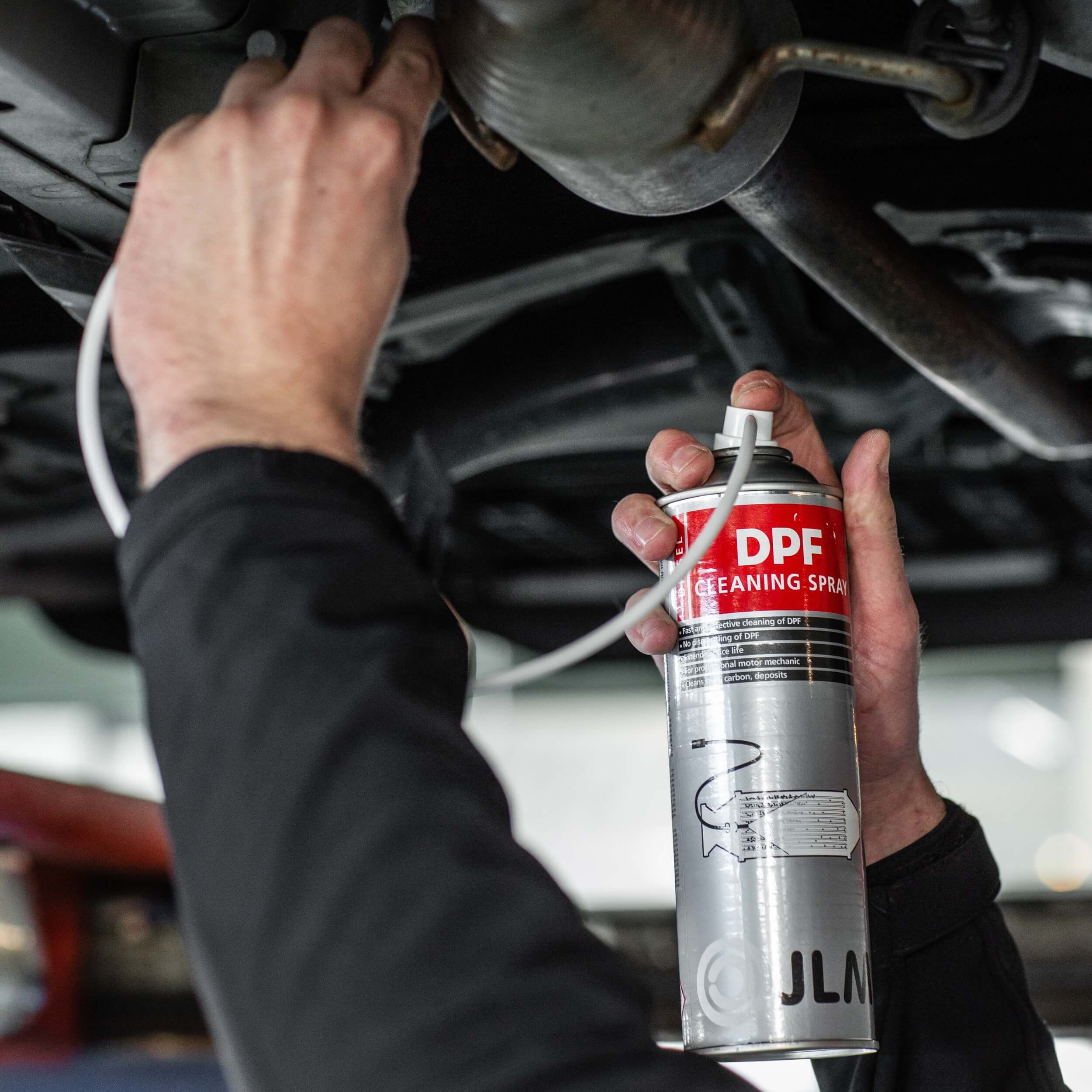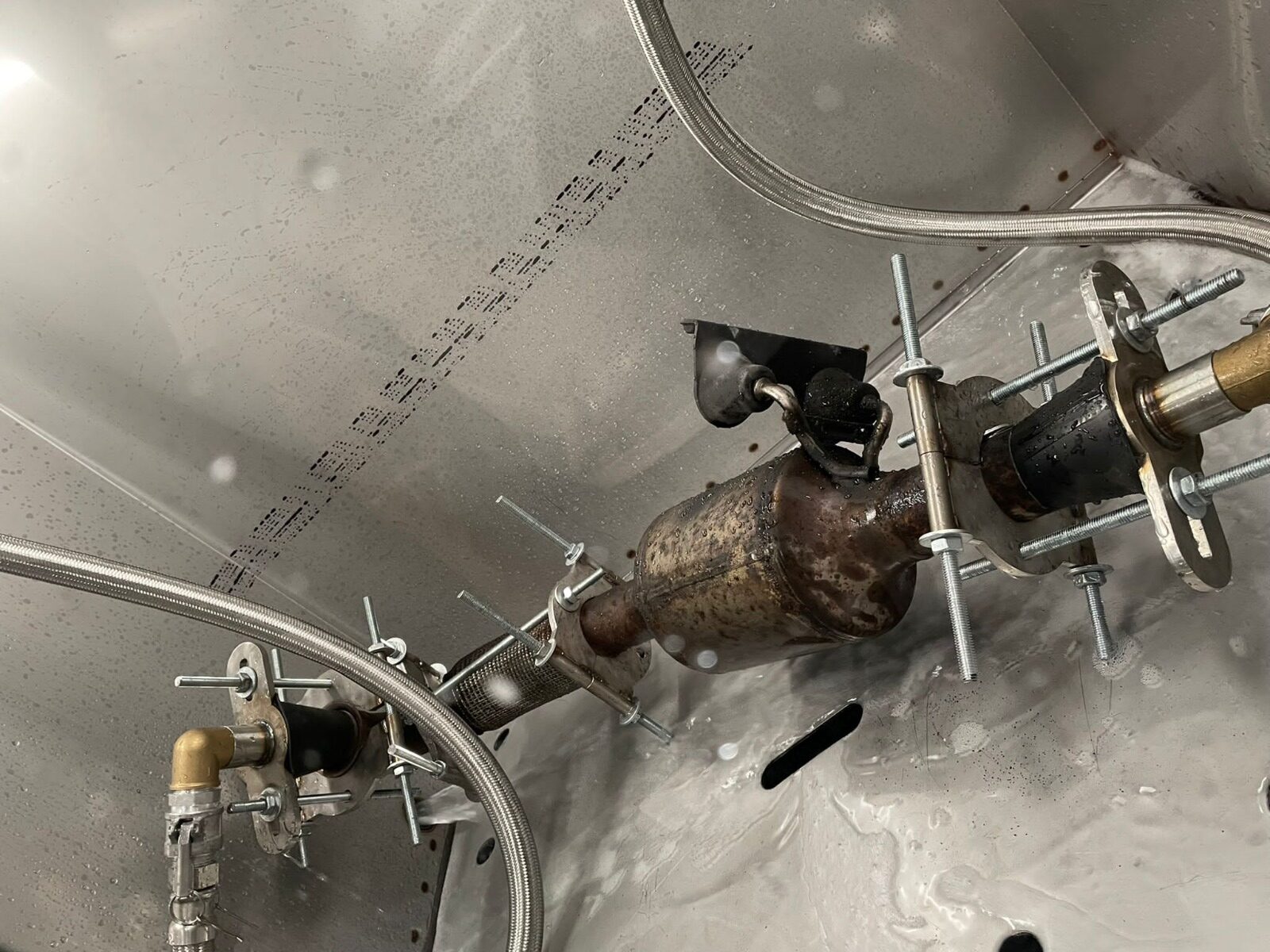Address
304 North Cardinal St.
Dorchester Center, MA 02124
Work Hours
Monday to Friday: 7AM - 7PM
Weekend: 10AM - 5PM
Address
304 North Cardinal St.
Dorchester Center, MA 02124
Work Hours
Monday to Friday: 7AM - 7PM
Weekend: 10AM - 5PM

When the DPF warning light comes on, many drivers look for a quick and inexpensive fix. One option is cleaning the DPF filter without removal. Advertised additives and sprays promise to restore flow without a shop visit. But does it really work? In this article, we explain how the process looks, its limitations, and when it’s better to choose professional hydrodynamic cleaning.

Non-removal DPF cleaning consists of introducing a special chemical into the exhaust system through the pressure or temperature sensor port. The product is intended to dissolve and burn off soot trapped in the filter. Then the engine is started and a so-called regeneration drive is performed, during which hot exhaust gases remove contaminants.
This process can be done DIY or in a shop, but it requires proper conditions—e.g., a warmed-up engine and a healthy EGR system. It does not work for heavily clogged filters.
In practice, this method only works when the filter is partially clogged. In heavily contaminated DPFs, chemicals do not reach all channels, so the effect is short-lived.
Effectiveness depends on the level of clogging and filter type. If the filter is only partially contaminated, the method may restore flow for a while. However, in most cases it does not remove ash and deposits that gradually block the substrate.
Non-removal cleaning should therefore be treated as a stopgap solution—good for prevention, but it does not replace full hydrodynamic cleaning. Only that method removes both soot and ash, restoring the filter to a near-factory condition.
Professional shops use equipment such as MDM-1B, which cleans the filter without risking damage to the ceramic substrate. The process uses 2HYDRO technology—two-sided water flushing under pressure with flow control, pressure measurement, and drying up to 150°C.
This removes all contaminants—both soot and ash—and the filter regains up to 98% of its original flow capacity. Importantly, the system generates a before-and-after test report so you can verify the cleaning results precisely.

Compared to chemical methods, hydrodynamic cleaning is completely safe, eco-friendly (closed water circuit, no aggressive agents), and delivers lasting results. That’s why specialist DPF regeneration shops use this technology instead of relying solely on chemicals.
By following these rules, you’ll minimize the risk of re-clogging. And if the filter needs deeper cleaning, choose a shop using MDM-1B—it’s a guarantee of effectiveness and long-term filter safety.
Cleaning a DPF without removal can be a quick and inexpensive way to clear light contamination, but it is not a solution for heavily clogged filters. It works as prevention, yet it does not remove ash and does not restore full flow. Therefore, when the filter needs thorough cleaning, choose professional MDM-1B 2HYDRO hydrodynamic cleaning—an effective, safe, and fully controlled process that brings the filter back to near-factory condition.